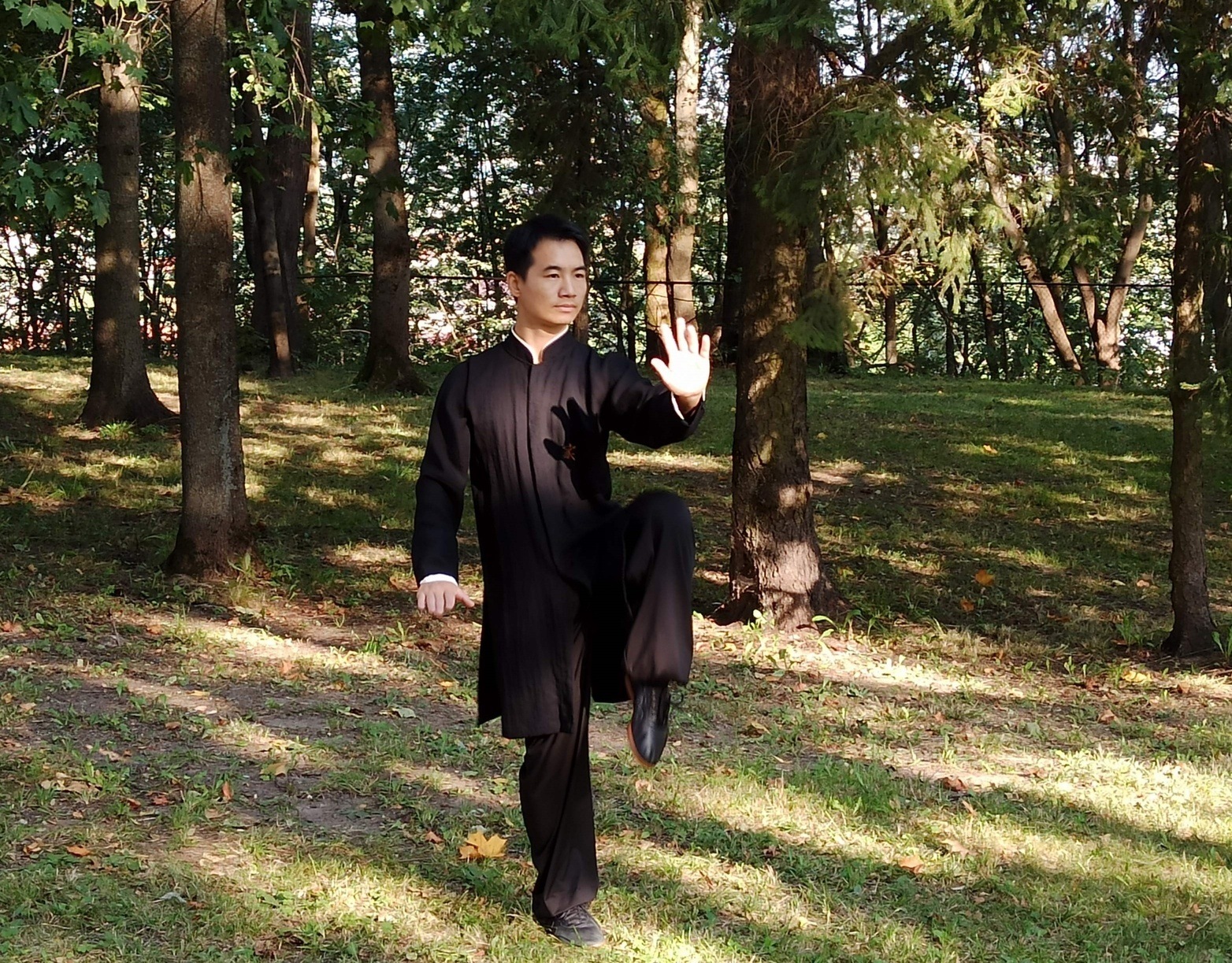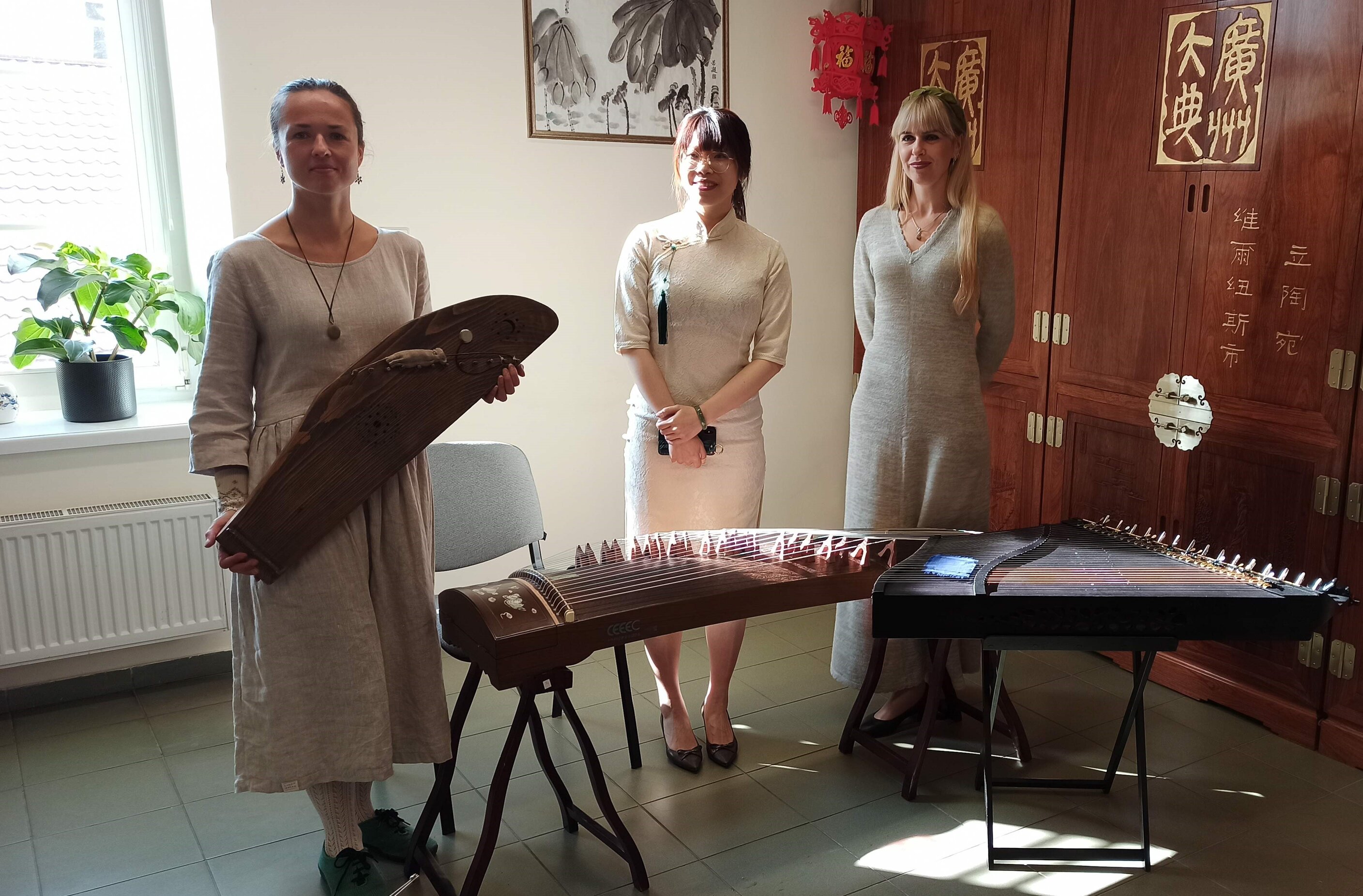This week on the 28-30th of September, The Confucius Institute of Vilnius University hosted three events to commemorate the birthday of the famous Chinese philosopher and thinker Confucius. As every year, we celebrated this date with cultural events:
we organized sports and music workshops and released two videos related with Chinese culture. The last day of of events was ended with the lecture about Chinese Graphic Design that was given by associate professor Robertas Jucaitis. We are delighted to share the results of our workshops:
On 28th, a video introducing Chinese qigong 气功 exercise was released. Together with qigong and taiqi master Liang Weiming we discussed about the benefits of Chinese qigong exercises and tried to explain what is the energy of “qi” (qi 气), which according to the ancient traditions of Chinese medicine is the main driving force of the human body. We all agreed that qigong exercise is the best medicine for maintaining emotional and physical balance. In the video below, master Liang Wenming himself provides a detailed explanation of “qi“ and the benefits Chinese exercises qigong:
https://www.facebook.com/watch/?v=257052978901225

© Margarita Žukauskaitė - Jucaitienė
On the second day, we shared the results of music workshop that lasted the entire week. Our goal was to merge the musical heritage of two different cultures in Lithuanian and Chinese traditional musical works and create a memorable and pleasant musical experience. The main idea of these workshops was to combine the same family musical instruments from Lithuanian and Chinese cultures and as a result find their similarities and differences. For this purpose, we chose traditional string instruments that perfectly represent each culture - Chinese guzheng 古筝 and Lithuanian kankles. Guzheng 古筝 is a Chinese stringed instrument dating back several thousand years. The modern guzheng commonly has 21, 26 or 26 strings. This instrument has similarities to Lithuanian kankles, however it has an obvious difference – the instrument is 1.60 m long. Guzheng players often wear fingerpicks made from materials such as plastic, resin, tortoiseshell, or ivory on one or both hands. Although our Lithuanian kankles do not reach such ancient history, however they stand out with their unique sound. For this workshop we chose two different kinds of kankles – traditional and concert kankles. Traditional kankles usually has a set of 5-12 strings and a star-shaped cutout. Concert kankles were conctructed only the 20th century and has an expanded range of more than four octaves (29 strings). It was a great honor for us to see the best kanklinists of our country in this project - Aistė Bružaitė (concert kankles), Agota Zdanavičiūtė-Bėkštė (traditional kankles) and Chinese musician Wu Yijing (guzheng 古筝). Musicians performed the Chinese folk song “Jasmine” 茉莉花 and Lithuanian folk song “Dobilali baltažiedeli”.
,,Jazminas”《茉莉花》:
https://www.facebook.com/watch/?v=264985994678564
„Dobilali baltažiedeli“:
https://www.facebook.com/watch/?v=335699024167511

© Margarita Žukauskaitė - Jucaitienė
On the third and the last day, associate professor Robertas Jucaitis gave a lecture on Chinese graphic design. When did Chinese graphic design appear to the world, how many characters do you need to know to understand Chinese texts and what graphic design trends are prevalent in China, do numbers bring happiness to the Chinese? These and other questions were answered during the lecture. We want to express gratitude to associate professor Robertas Jucaitis for brief introduction to Chinese graphic design.


© An Haining
Hope to see you in our next events!
Vilniaus University Confucius Institute
